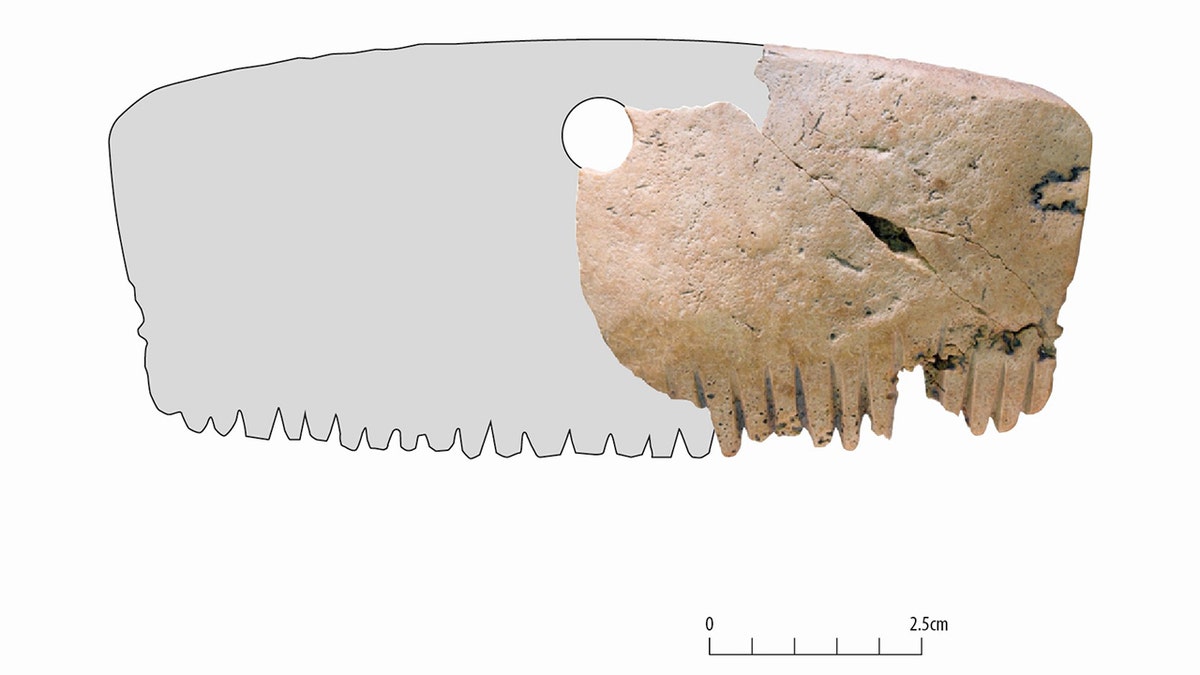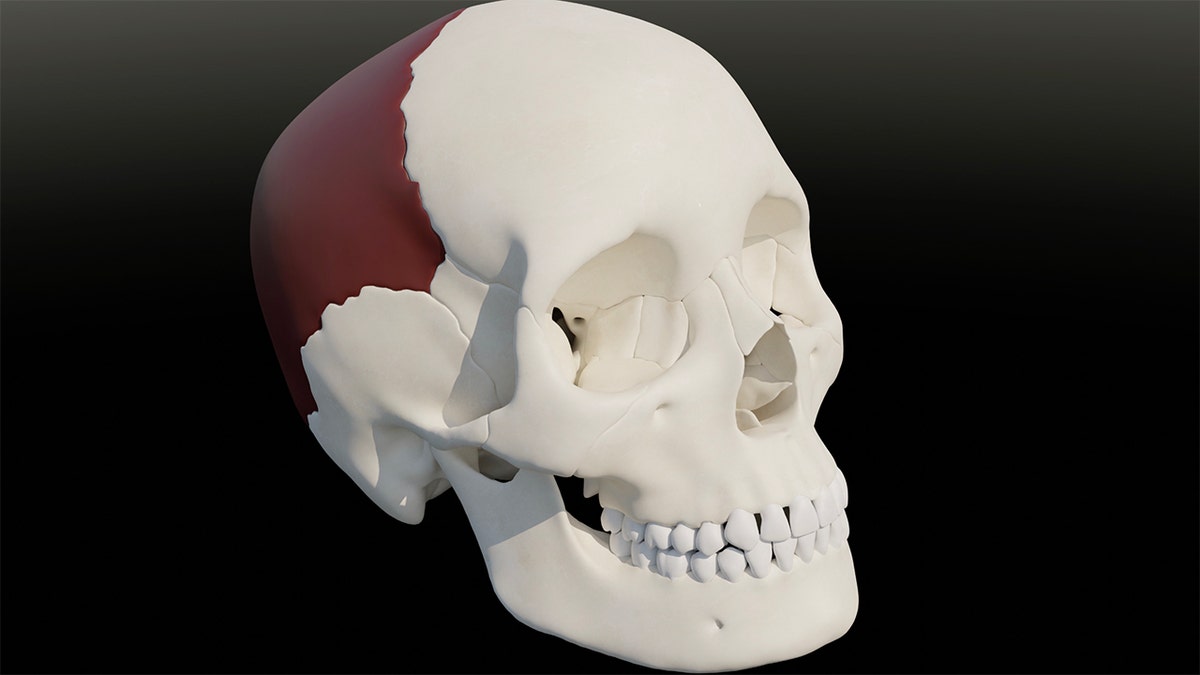Fox News Flash top headlines for March 1
Fox News Flash top headlines are here. Check out what's clicking on Foxnews.com.
A hair comb made from part of a human skull has been identified recently from among thousands of ancient artifacts recovered during archeological excavations around Cambridge, England.
The comb, dubbed the Bar Hill Comb, was found by scientists from the Museum of London Archaeology in London, England.
The ancient bone comb, "dating from the Iron Age (750 BC - 43 AD), was found at Bar Hill, four miles (6.4km) northwest of Cambridge," said the BBC.
NEWLY UNCOVERED MAYAN SCULPTURE SHOWS FEMALE RULER SUBDUING CAPTIVE MALE WARRIOR
The comb was among 280,000 items collected between 2016 and 2018, the outlet noted.
Michael Marshall, the archeology team lead, described the comb discovery as "truly astonishing," according to the BBC.

Researcher holds up the ancient comb found in Cambridge, England. The comb is made from part of a human skull, researchers say. (Museum of London Archaeology)
Only two other comparable artifacts have ever been found in Britain, both within 15 miles of where the comb was discovered, Marshall noted.
Objects made from human bone may have been used in special rituals around the dead, but others were apparently used as tools.
The artifacts were recovered during archeological excavations prior to the construction of new $1.5 billion national highways, the BBC said.
Though it's shaped like a comb and has teeth like a comb, the artifact's exact use is not known.

Above, the ancient Bar Hill Comb is shown, along with what the intact item may have looked like. (Museum of London Archaeology)
It may provide important context around "ritual and belief" in Britain during the Iron Age, including "how human remains were looked after and sometimes modified within local communities," said the BBC.
"Long before the advent of domestication, humans hunted animals and harvested every usable part from them."
Objects made from human bone may have been used in special rituals around the dead, but others were apparently used as tools.

The piece of bone from human skull likely used for comb shown above. (Museum of London Archaeology)
"The Bar Hill Comb may have been a highly symbolic and powerful object for members of the local community," team lead Marshall said, according to BBC.
Humans use animals for "far more than just food, wool, and companionship," Katherine Hodge, interim project archeology lead for Project Archeology wrote for that organization's website.
"Long before the advent of domestication, humans hunted animals and harvested every usable part from them," she continued.
"In addition to meat, hide, fur and wool, this included using bones, antlers and teeth for tools," she also wrote.
Because bones are an "organic material," she noted, they "break down over time."
"Rather than being an anonymous piece of bone, its symbolism and significance would have been immediately apparent to anyone who encountered it."
"The archeological record, because of this, can be incomplete at times because artifacts made of bone have already rotted away or are too fragile to survive," she noted.
A 3,500-YEAR-OLD BEAR PRESERVED IN SIBERIAN PERMAFROST IS DISSECTED BY RESEARCHERS
Of the Bar Hill Comb, archeological team lead Marshall said, "It is possible it was carved from the skull of an important member of Iron Age society whose presence was in some way preserved and commemorated through their bones."
He continued, "To be able to see such hyper-local influences in groups of people living over 2,000 years ago is truly astonishing."
Marshall said there is "no evidence of wear" on the comb teeth, suggesting it was never used as a comb, but instead worn as an amulet, said the BBC.
CLICK HERE TO SIGN UP FOR OUR LIFESTYLE NEWSLETTER
"Rather than being an anonymous piece of bone, its symbolism and significance would therefore have been immediately apparent to anyone who encountered it," Marshall said.

The hands of an anthropologist reveal a human skull as it's brushed from the dirt. (iStock)
Only two other similar pieces have ever been found in Britain, according to Marshall. One was found in Earith, Cambridgeshire, in the 1970s and featured carved teeth, while the second was found in Harston Mill in the early 2000s.
CLICK HERE TO GET THE FOX NEWS APP
The Bar Hill Comb will be housed at the Cambridgeshire Archaeology Archive, the "main repository for material found as part of archeological fieldwork in the county," said the BBC.
Fox News Digital reached out to historians seeking more information about the artifact.



